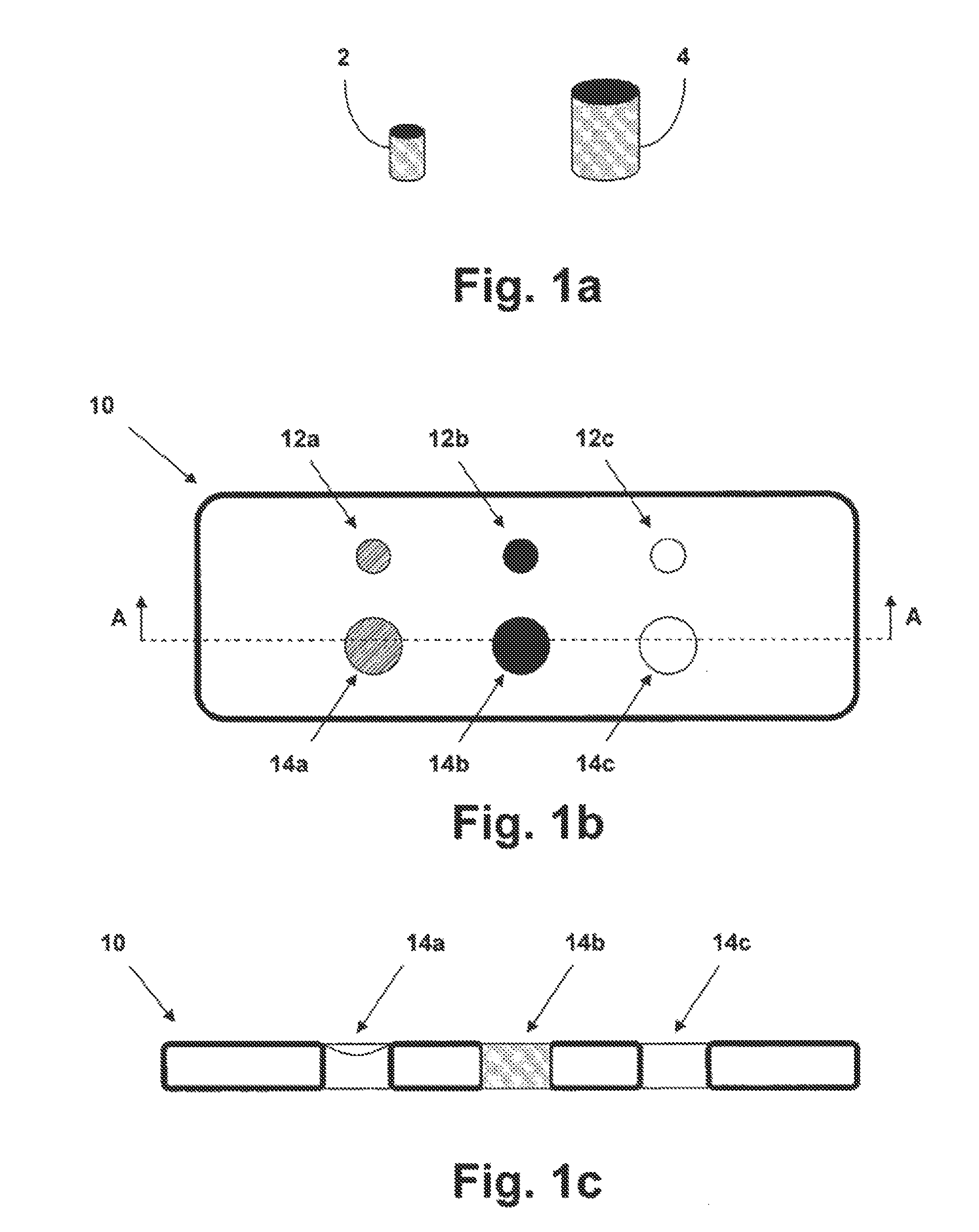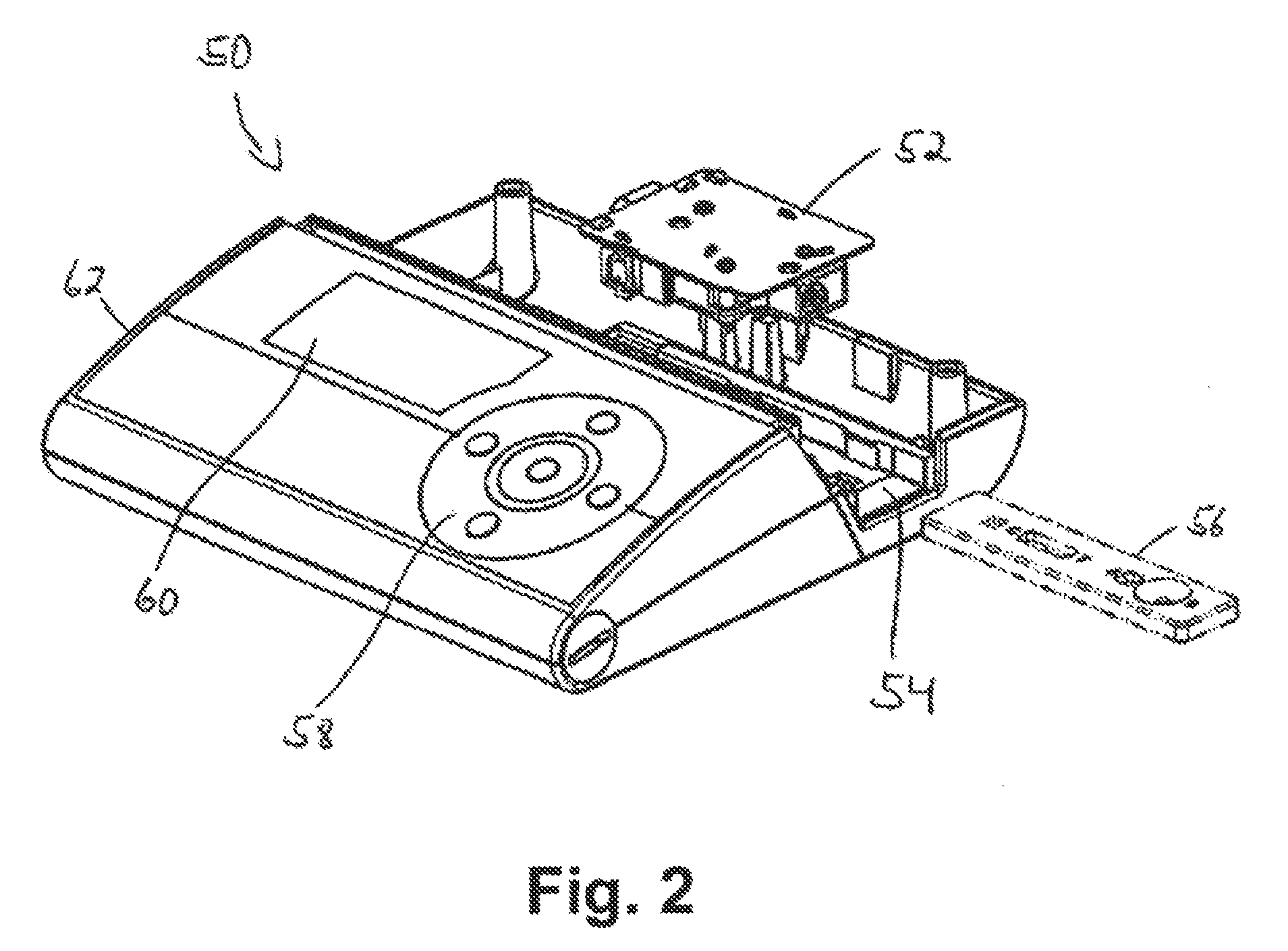Fluorescence standard, and the use thereof
a fluorescence standard and optical standard technology, applied in the field of fluorescence standards or optical standards, can solve the problems of mechanical, thermal and chemical instability, change in fluorescence intensity, age or dry out, etc., and achieve the effect of improving the homogeneity of the standard
- Summary
- Abstract
- Description
- Claims
- Application Information
AI Technical Summary
Benefits of technology
Problems solved by technology
Method used
Image
Examples
examples
[0056]1. Commercially available colored glasses were compared with the inventive minerals for use as fluorescence standard. Here, excitation (abbreviated as Ex in the figures) took place at values in a range from 365 nm to 660 nm, and emission (abbreviated as Em in the figures) was measured at values in a range from 480 nm to 720 nm with the above-described measuring instrument 50 implemented as an ESE FluoSens sensor.
[0057]The comparison glasses used are the commercially available colored glasses from the Schott glass company, with the product names OG 550 (melt number: 339636, dimensions 50.0×50.0 mm, thickness 1.0 mm), OY 530 (dimension 13.0 mm, diameter, thickness 2.0 mm), and OY 570 (dimension 13.0 mm, thickness 2.0 mm).
[0058]FIGS. 3a through 3n show, in the form of bar graphs, the measured fluorescence intensities in mV for ruby, amber, turquoise, calcium fluoride, and the three different fluorescence standards available from Schott, namely the glasses OG 550, OY 530, and OY 5...
PUM
| Property | Measurement | Unit |
|---|---|---|
| excitation wavelength | aaaaa | aaaaa |
| wavelengths | aaaaa | aaaaa |
| temperature | aaaaa | aaaaa |
Abstract
Description
Claims
Application Information
 Login to View More
Login to View More - R&D
- Intellectual Property
- Life Sciences
- Materials
- Tech Scout
- Unparalleled Data Quality
- Higher Quality Content
- 60% Fewer Hallucinations
Browse by: Latest US Patents, China's latest patents, Technical Efficacy Thesaurus, Application Domain, Technology Topic, Popular Technical Reports.
© 2025 PatSnap. All rights reserved.Legal|Privacy policy|Modern Slavery Act Transparency Statement|Sitemap|About US| Contact US: help@patsnap.com



